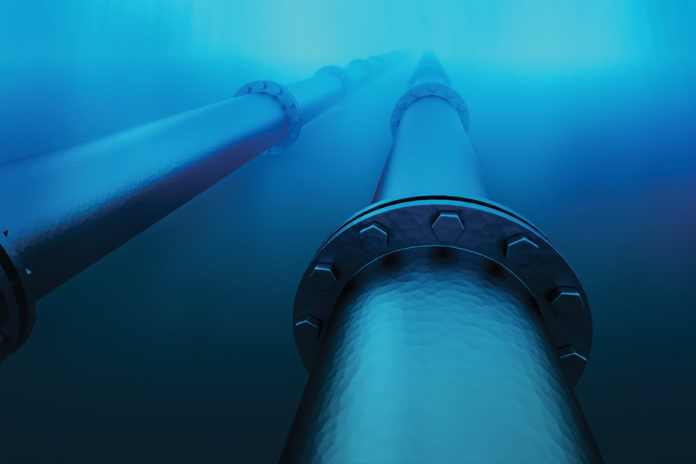
Port of Corpus Christi and Howard Energy Partners
Introduction
Port of Corpus Christi and Howard Energy Partners responding to the United Nations Intergovernmental Panel on climate change, the Port of Corpus Christi Authority (Port of Corpus Christi) signed a Memorandum of Understanding (MOU) with Howard Midstream Energy Partners LLC to convert the centrally positioned Javelina Refinery to the area’s first carbon-neutral blue hydrogen production facility.
Driven by the opportunity to perform its part in reducing the global footprint, the Port of Corpus Christi welcomed the initial discussions in this joint venture with Howard.
Hydrogen Production and Waste Gas Utilization
The Javelina Refinery’s location allows for it to be connected to all six refineries in the area. It controls nearly 60 million cubic feet per day of hydrogen production. This reveals itself as a combination of waste gas found in the facilities and hydrogen that comes from the process of steam methane reformation. Sold back to refineries and additional industries, the hydrogen is utilized to strip impurities during the process of refining. The partnership is focusing on scaling hydrogen production for exports to markets that are overseas.
“With this exciting project and progressive partnership with the Port of Corpus Christi, we are demonstrating yet again our commitment to delivering clean, reliable energy that powers communities and business around the world,” said Mike Howard, Chairman and CEO of Howard Energy Partners.
While hydrogen possesses a surplus of applications similar to those of fossil fuels, it does not produce carbon emissions. It offers realistic opportunities to reduce emissions industries pertaining to steel, cement, and shipping. Hydrogen atoms can be isolated from both water and natural gas.
The premier provision of the Port and Howard MOU is the plan to capture carbon emissions at the Javelina facility. This will eliminate atmospheric release and, therefore, the contributions to global warming as well. The residual carbon dioxide will be met with great thought and decision that includes potential use but also capture and storage scenarios.
“This is a very exciting opportunity,” said Jeff Pollack, Chief Strategy and Sustainability Officer for the Port of Corpus Christi. “It is important to recognize the significance of harnessing waste gas, which would typically be burned or flared off with no economic value. Not only does capturing it reduce the need for flaring and reducing emissions, but it gains an economic value.”
When considering storage abilities, the Port of Corpus Christi can be found front and center. Its pipeline infrastructure paired with high-density emitters sets the groundwork for storage plans, but it contains an ace up its proverbial sleeve. The port owns land that extends into the Gulf of Mexico. Confirmed by experts at the University of Texas at Austin who have studied the Texas coast geology, the area is well suited for the injection and storage of pressurized carbon dioxide.
Looking ahead at a future of economic prosperity and environmental conservation, the Port of Corpus Christi remains committed to making the infrastructure needed for collecting and pressurizing carbon dioxide a reality. Its land offshore awaits usage to provide for permanent storage formations.
Storage Plans and Carbon Management
“All of these factors can support the Port as a hub for carbon management for the entire United States,” said Pollack. “This nine-mile state submerged asset opens up a whole new prospect for the Port.”
Carbon Dioxide Uses
The obvious positive outcome of carbon dioxide capture is the environmental benefits of squashing emissions and reducing the carbon footprint. The economic value can be identified through diverse means and not just isolated to the oil and gas industry.
- Used in firefighting equipment
- Source in chemical and feedstock production
- Involved in the production of refrigerant systems, welding systems, water treatment processes, and carbonated beverages
- Used in fertilizer and methane production
- Combined with epoxides to create plastics and polymers
- Popular and well known for dry ice
- Used as a curing agent in concrete
About Port of Corpus Christi and Howard Energy Partners
Located on the western Gulf of Mexico, Corpus Christi is the largest domestic port in relation to total revenue tonnage. Soon to bear a depth of 54-feet, the port stands as a major international and domestic maritime hub of commerce. Infrastructure includes accessibility by two major interstate highways and three North American Class-1 railroads. Given its geographic location, the Port of Corpus Christi possesses everything needed to be an industry leader.
Howard Midstream Energy Partners LLC is an independent entity that owns and operates a variety of crude oil pipelines, natural gas processing plants, liquid storage terminals, facilities with deep water access in addition to other rail and terminal outlets. Its multifaceted ability and reach allow for a significant contribution in partnering with the Port.
Considering Howard is based out of San Antonio, Pollack expressed a sense of pride in the future expansion and capability of the Port and this latest project being outfitted by two major Texas entities. This only solidifies the innovation and desire found within Texas to not only improve its economics but also to show the world the capability of the oil and gas industry to diversify and prosper while leaving a positive impact on the environment and world.
Nick Vaccaro is a freelance writer and photographer. Besides providing technical writing services, he is an HSE consultant in the oil and gas industry with eight years of experience. He also contributes to Louisiana Sportsman Magazine and follows and photographs American Kennel Club field and herding trials. Nick has a BA in Photojournalism from Loyola University and resides in the New Orleans area. 210-240-7188 [email protected]














